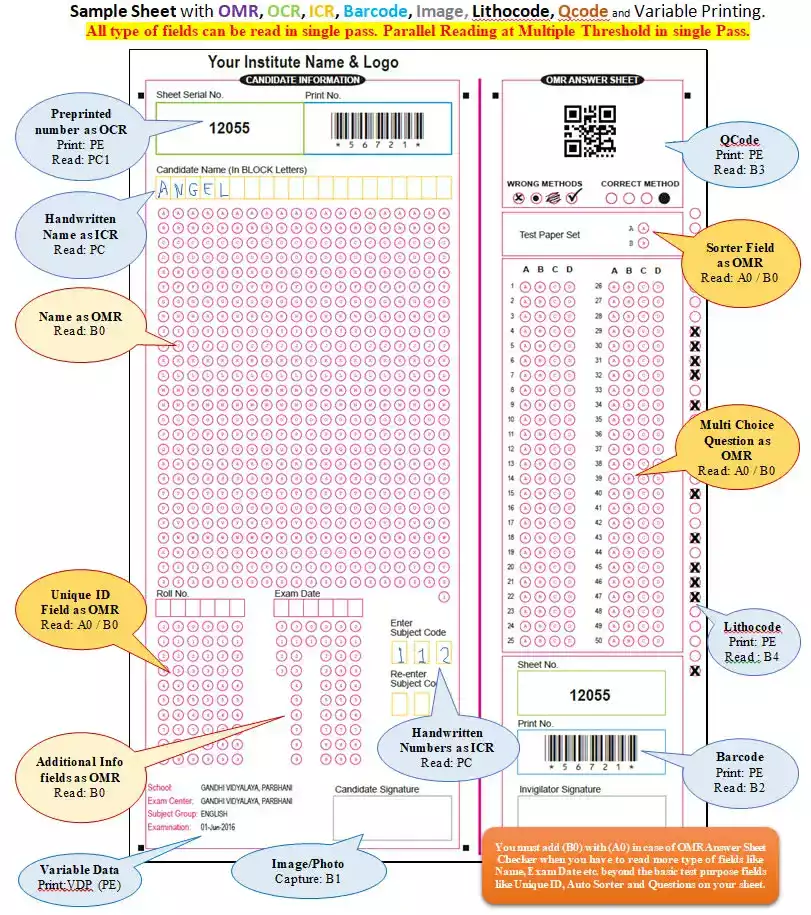The Basic OMR Reader is the core component of any OMR solution. It reads the bubbles from scanned images and raw data is generated.
The Basic Reader (B0) generates and provides data as it is without applying any post reading logic.
Answer Sheet Reader (A0) is a limited version of Basic Reader (B0) where it reads only Test Related blocks like Question Blocks, Rollno Block, TestID Block.
Though these test related blocks are also OMR blocks, but they are different form other blocks like Name, Date of Birth etc. because test related blocks need some different treatment through a common approach for all tests.
Though A0 is a limited version of B0, but at the same time, A0 is different because it takes care of default needs of post reading logic for Test related blocks like comparing with Answer key, checking duplicate IDs in same test, Test in series etc.

The Basic OMR reader (B0) can be enriched with additional Reading features that will enable the software to optically read more types of blocks.
B1 - Image Reader Capture
B2 - Barcode Reader
B3 - QCode Reader
B4 -
Lithocode Reader
PC - OCR & ICR Reader
Some common Post Reading Logic can be availed if B0 is coupled with Sheet Designer (SD) that allows you to set different replacement values for sheets. Example of Post reading logic is like : Value replacement where the software has read bubbles in terms of A,B,C and given output in Excel in terms of Delhi, Bombay, Bangalore.
Basic Reader can be further coupled with more addon features to enhance its functionality.
B5 - Multipage Form Reader
PF - Server Connectivity Feature
+API - OMR-OCR-ICR API Integration and SDK
Coupling Basic Reader (B0) with Multipage Form reading extension (B5) creates a convenient possibility to read and combine the result obtained from multiple pages of a single form. This feature is very convenient for multiple section tests with large number of questions, long application forms, long questionnaires for feedback etc.
The Basic OMR reader also has some addon possibilities for management of the data generated after various type of optical reading and post reading logic. If the basic OMR Reader is coupled with The Server Connectivity Feature (PF) then the Software gains the possibility to upload the data to a central server.
Even when the OMR API is used, it actually requires a license of Basic OMR reader running at the backend, which actually does the work of OMR reading and transacts the input and output through the API.
Read more:Addmen Group Copyright 2024. All Rights Reserved.